We did a soft launch for FigPii in late January of this year. But we had a problem!
Background: Our conversion optimization clients tend to be on the large side. The cost of the experimentation software for these clients is expensive. In 2013, we built FigPii, an internal platform to help clients conduct split testing, heatmaps, video recording, and online polling. The platform is available as part of our consulting work.
FigPii was internal for many years, but more and more clients were suggesting that we need to make it available to the public.
Fast forward to 1/22/2020 – FigPii is available to the public for the first time.
Since then, I noticed an alarming trend. Several companies sign up every day for an account, but they do not install our analytics tracking script.
This post covers the different steps we took to increase our activation rate by 3 folds from 20% to 62%.
Define the building blocks
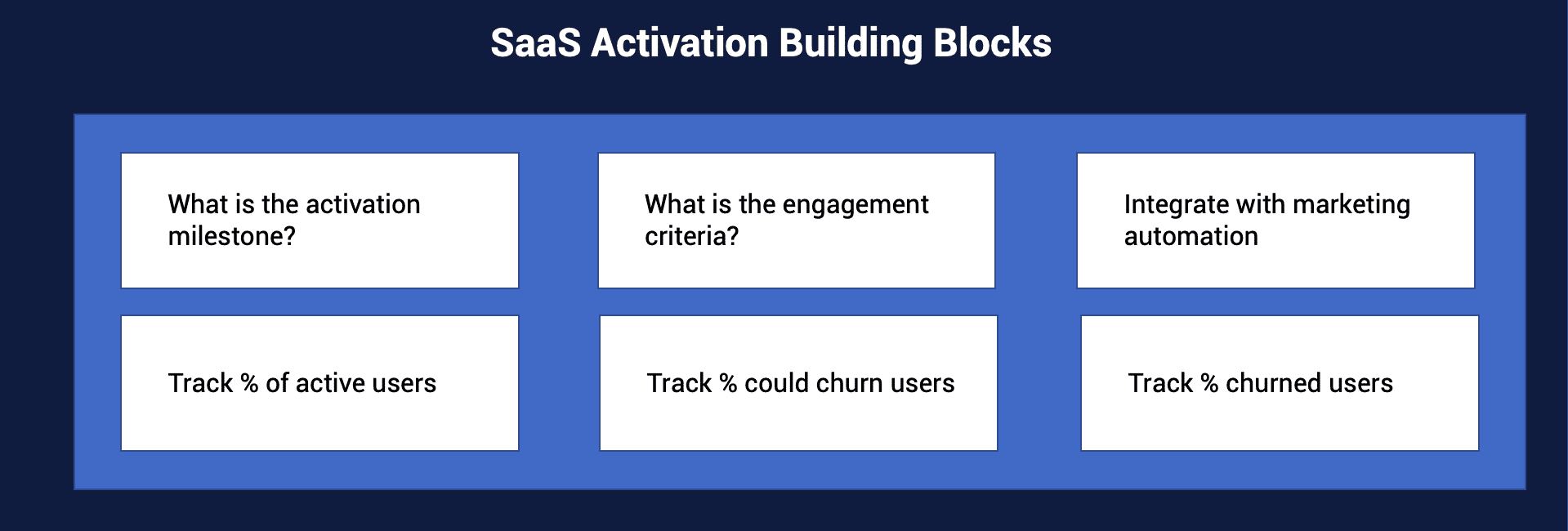
Before taking any action, we needed to have the correct metrics defined and tracked. We also needed to integrate with marketing automation software since it plays a part in the activation campaign.
Account activation milestone: this is the step a user must take in order for them to start using the platform. For FigPii, the activation milestone was installing the FigPii script on the site. Without installing the script on the site, new users have no way to use FigPii or explore its features.
Our code installation rate hovered around 20% in March.
We needed to understand why users were not installing the script and fix the problems they are facing.
Account engagement metrics: A new user could install the script on his site but if he is not using the platform, then he is not active. A non-active user is a user that could potentially leave. For FigPii, we track how often do users create heatmaps, video recording, polls, and AB tests. We also track the frequency of someone logging in to the platform. The less a user logs-in, the higher the chance of them leaving.
The more users use our platform, the more engaged they are, and the less chance they have of churning.
Marketing automation. For marketing automation, we integrate with ActiveCampaign. We AC to look closely at how users interact with FigPii, how often they login, and what pieces of the software they interact with.
With the building blocks defined and tracked, it was time for me to take a closer look at these new accounts and figure out how to activate a higher percentage of them.
The following are the general steps I followed. This is by no means perfect, but trying to do this while running consulting projects and making sure that our marketing and technical teams are running smoothly can be challenging.
1. Email sequence
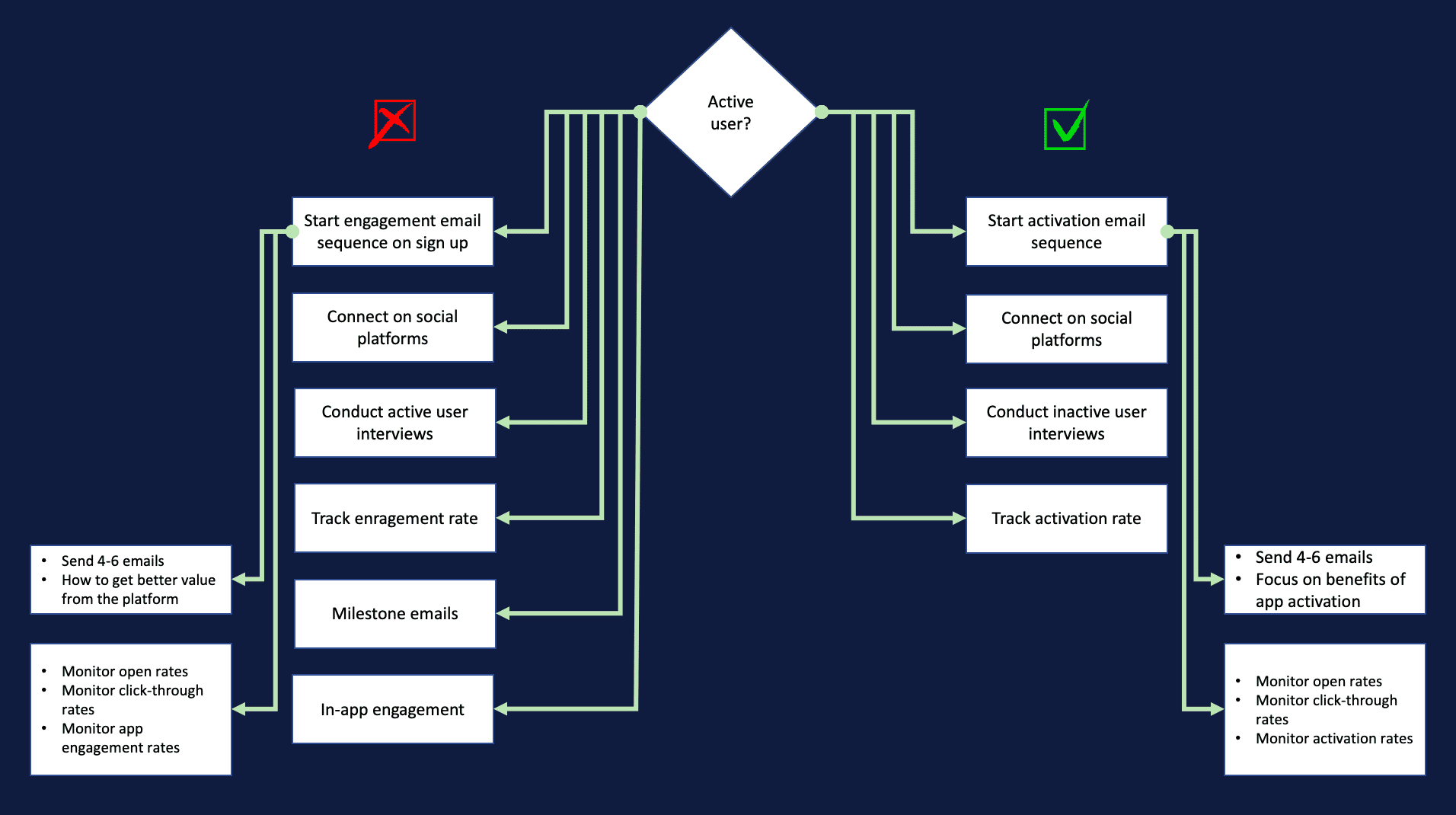
Previously, when users signed up for a new account in FigPii, he received a single welcome email. A welcome email that I wrote three years ago without paying close attention to it.
It was time to change that.
When a user signs up for FigPii, we push the data to ActiveCampaign. So, I needed to create the right workflow automation there.
I created two email sequences: one sequence is for users who install the FigPii script on their site. The other sequence is for users who do not install the script. The goals of the sequences are different.
Email sequence to active users (installed the code): This sequence contains six different emails. It has a straightforward goal: Educate new users on how to get more value from FigPii to create a user-friendly site. After sending this campaign for the last two weeks, I am seeing a consistent open rate of 83%. Not bad at all!
Email sequence to inactive users( did NOT install the code): This sequence also contains six different emails. This is a more sophisticated email sequence based on how the user responds to the different emails. The goal of this flow is to get these users to install the FigPii analytics script. This campaign has an open rate of 48%.
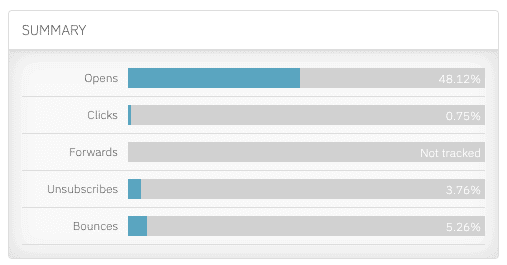
2. Connect with new users personally on Facebook/Linkedin.
This was a bit unusual, but we look up the person who signs up for FigPii and connect with them. Most of the connections happen via LinkedIn with a clear message. There is a smaller group of users who sign up for FigPii from two Facebook groups. These users know me as the founder, so there is always a good chance that I am connected with them already. If not, I send them a message asking if they would be willing to connect. These connections have kept me busy over the last few weeks.
A side benefit of these connections is the increase in engagement rates on my Linkedin posts!
3. Customer interviews: Why is FigPii hired or not hired?

We implement the Jobs To Be Done #JTBD framework in our conversion practice. It was time to run #JTBD interviews for FigPii.
If are you not familiar with JTBD – here is the 60-second overview. People hire (use) products to accomplish some sort of job in their lives. The terminology is a bit strange when you hear it first but you get used to it quickly. Think of the different needs that you have in your life as jobs. There are different candidates that apply for the job. We subconsciously decide which of these candidates to hire and which ones we turn away.
Example: I will be hanging out with my family later tonight. We are looking for something entertaining to do (job). We have several options (candidates) to do the job. We could watch TV. We could play a board game. We could just sit around and share stories.
Understanding the job that you get hired to do is important. You might think that you are getting hired for one thing and discover that users hire for something completely different.
We started to conduct #JTBD interviews for FigPii, we divided the pool of interviewees into two groups:
- Active users
- In-active (churned) users.
The goals for each interview is different:
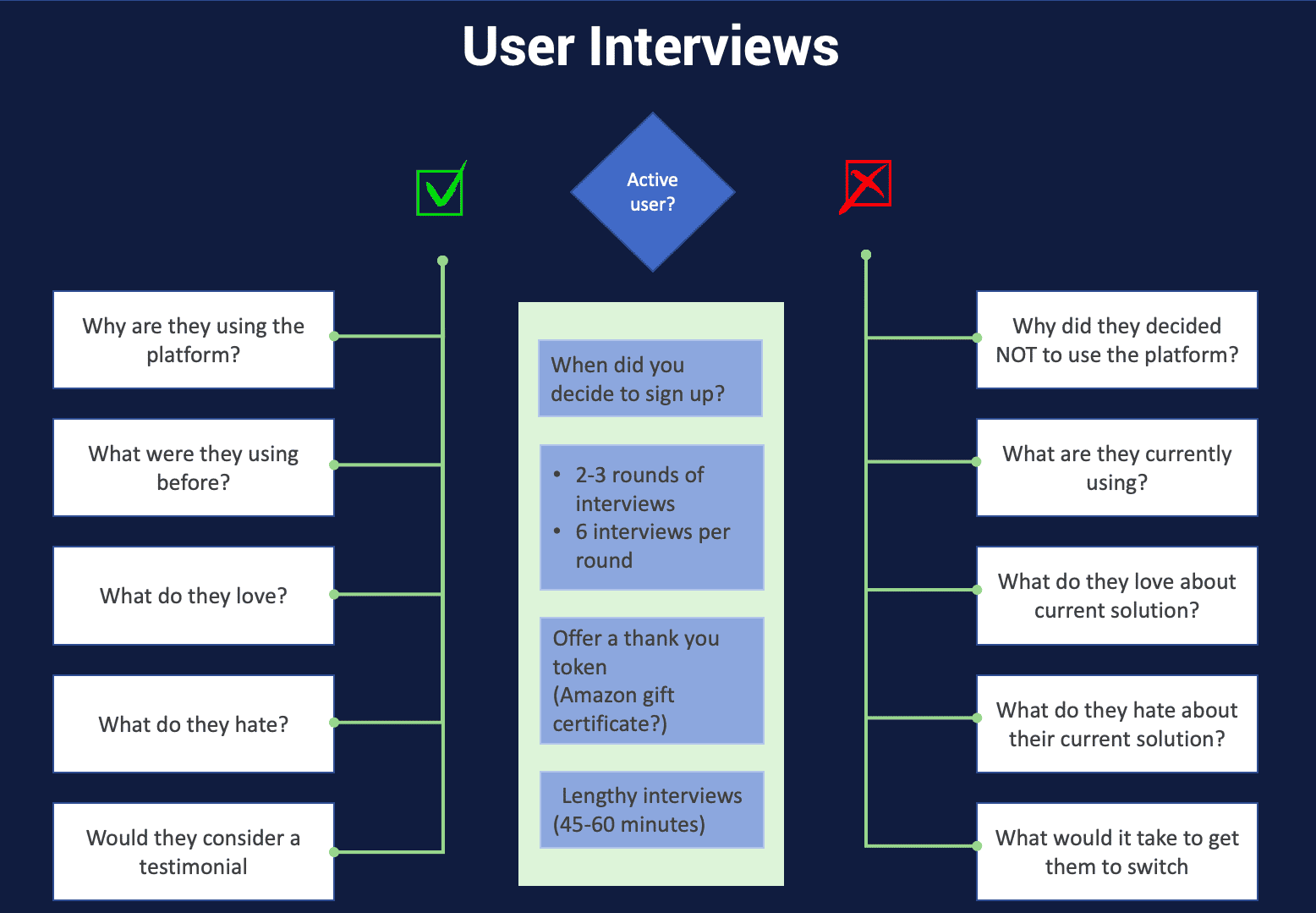
Bonus – JTBD interviews are VERY different from typical user research interviews. If you are interested in listening to an interview, then I invite you to join our private Facebook group – I posted a recent interview I conducted there.
Results of the activation campaign and next steps
When we first started the campaign our user activation rate was at 20%.
After running the activation campaign for two weeks, FigPii activation rate is at 62%.
That is a 3x improvement.
The insights that came out of the interviews helped us redesign the FigPii site completely.

But we are just getting started. There are many more things that we will be doing in the next couple of weeks, so I will give you a sneak peek.
In-app activation
Since we determined that installing the code is an important milestone, we are making a tough decision: Users will only access the platform after installing the FigPii tracking script. When the user logs to the application, he will see with a layover that prompts to install the code. The user will not be able to click out of that layover until he installs the code on his site.
This approach is too aggressive! What if the user does not have a way to install the code himself on the site? There is no way for him to see anything in FigPii until that step is done. I can see how some people will get annoyed with this.
We will test this out and see what responses we get.
Testing the email sequences
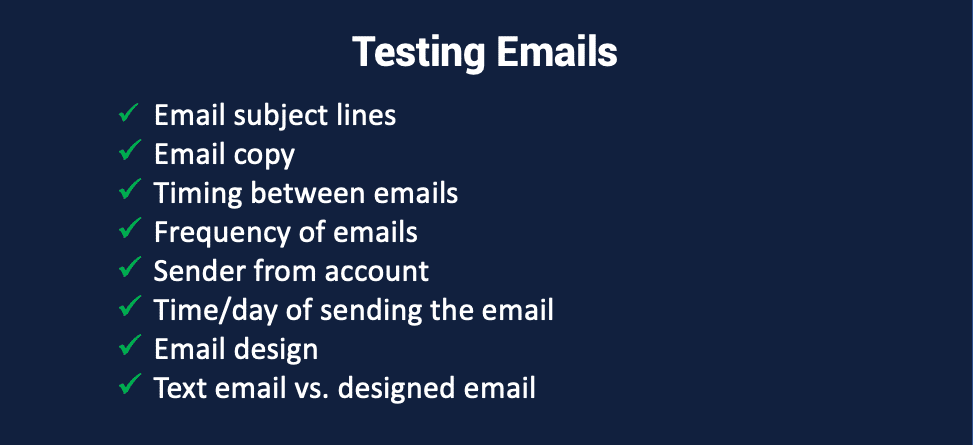
testing-emails
We need to fine-tune our activation campaigns. I will be doing a lot of testing for the active campaign sequences in the next few weeks. The main areas that I will focus on:
- Email subject lines
- The copy of the activation emails is good in some instances and not so great in others.
- Timing between emails
Moving from a freemium model to a free trial model
The starter FigPii account comes with a lifetime free subscription.
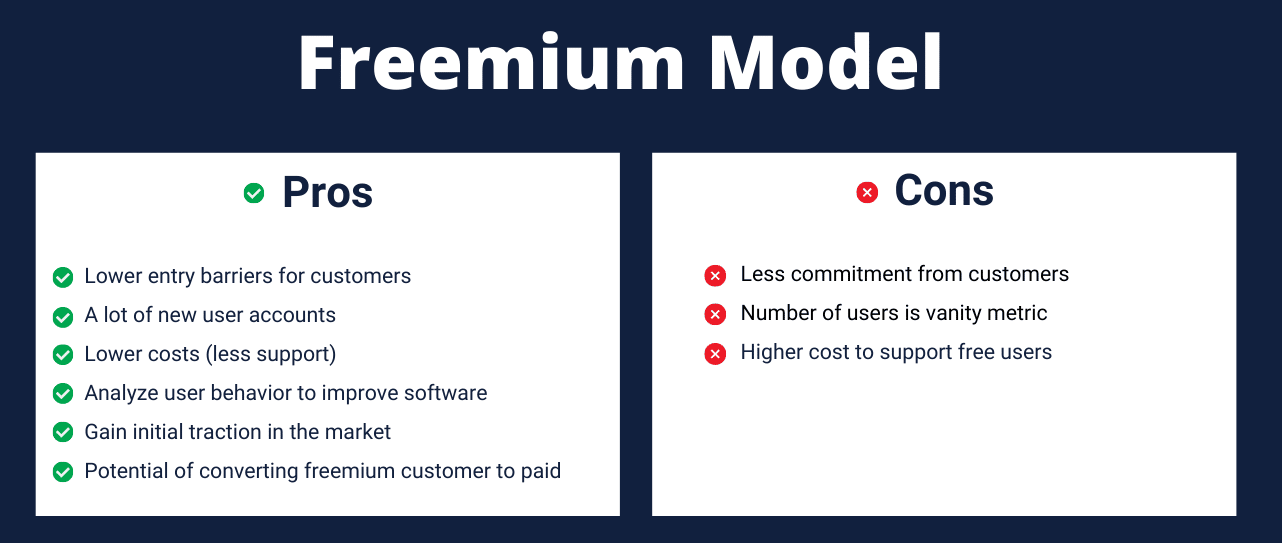
The benefit of offering a freemium account is to give companies a chance to try FigPii without any commitment. The downside of providing a freemium account is this lack of commitment. Users who sign up for the free account are not fully committed. They have no skin in the game.
It is nice to wake up every day and see more and more users signing up for the new accounts. However, it is a vanity metric. It means nothing in terms of additional revenue. Actually, these accounts are bad for FigPii financially. While we are on the startup plan with AWS, yet we still use several other hosting providers. Some of them are expensive. The main culprit here is MongoDB. We saw our MongoDB bill double month to month. For a self-funded startup, this can spell disaster.
Over the next few weeks, we will be testing a move away from the freemium model to a free trial model.
Can you help us out?
If you enjoyed this post, please share the twitter thread…
How we tripled user activation rate on FigPii
In 2013, we built FigPii to help clients conduct split testing, heatmaps, video recording, and online polling.
In January 2020, we made FigPii available to the public.
But we noticed an alarming trend.
THREAD …
— Invesp (@invesp) June 3, 2020
And if you’d like to stay up to date with our user activation campaign and stories like this one, then please join our email list.
If you did not get an account on FigPii yet, please go ahead and check it out!



